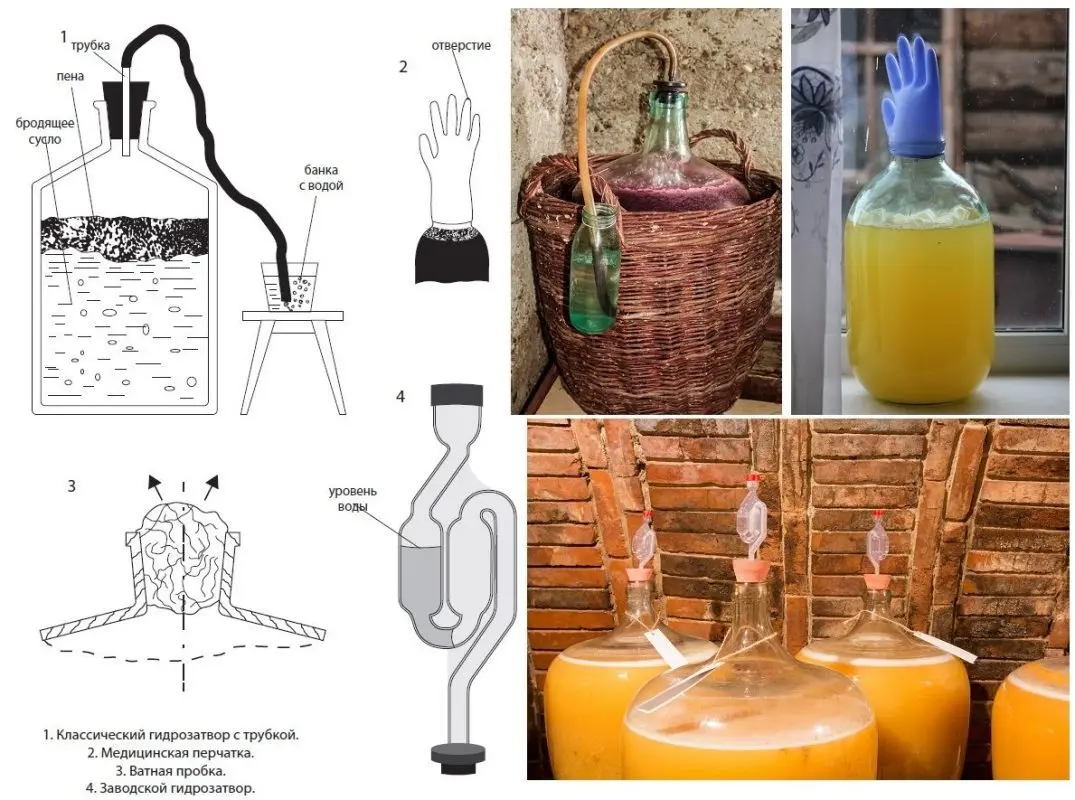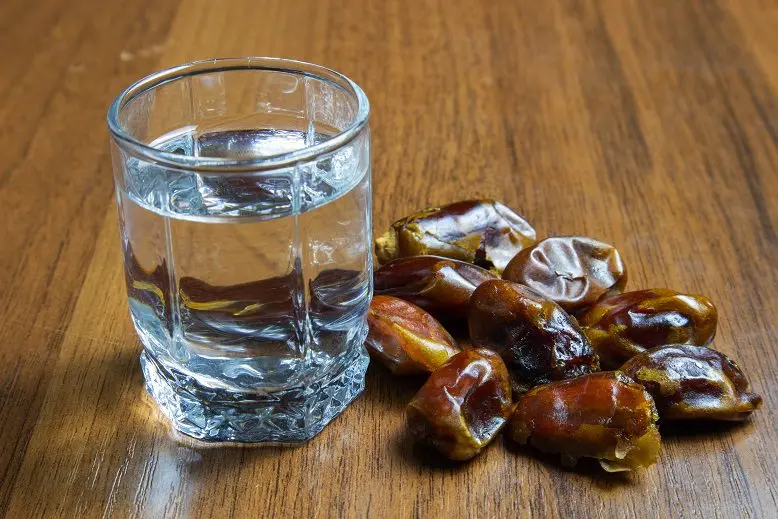Moonshine from dates is characterized by light smoked notes with a fruity tinge. Considering the cost, expired or substandard raw materials are usually processed, even moldy dates are suitable – the high temperature during cooking will destroy the fungus. The main thing is to remove rotten fruits that give bitterness.
Theory
The sugar content of dates is 50-66%. This means that from 1 kg of raw materials, up to 0,75 liters of moonshine with a strength of 40% is obtained. To increase the yield, you can add beet sugar, 1 kg gives up to 1,2 liters of forty percent distillate, but the quality of the drink deteriorates – the date aroma becomes less saturated. With a sufficient amount of raw materials, I advise you to make moonshine from dates without sugar.
On baking or alcohol yeast, date mash will be ready in 4-9 days, but these strains worsen the aroma of the finished drink, so if there is enough time, it is better to use home-made raisin or fruit sourdough, or store-bought wine yeast. Fermentation will last 30-50 days, but the organoleptic properties of the distillate will noticeably improve.
The peculiarity of the technology for making mash from dates is that you first need to dissolve the fructose contained in the pulp of the fruit in water. To do this, compote is boiled, which is then cooled and yeast is added.
Ingredients:
- dates – 3 kg;
- water – 18 liters and another 4 liters for each kilogram of sugar;
- sugar – 0,5-2 kg (optional);
- yeast – bakery (20 grams dry or 100 grams pressed) or wine per 20 liters of must;
- citric acid – 10 gram.
- Citric acid creates the desired acidity of the environment, which contributes to fermentation.
Date mash recipe
1. If necessary, 3-5 days before working with raw materials, make raisin or berry starter.
2. Remove the seeds from the dates, trying to keep as much pulp as possible. The process is laborious, but very desirable. Bones significantly worsen date moonshine – an unpleasant aftertaste appears.
3. Put the pulp into a cooking pot, add sugar (optional) and water at the rate of 4 liters per 1 kg of raw materials (together with sugar). Mix.
4. Bring the mixture to a boil, boil over low heat with the lid open for 25-30 minutes, stirring occasionally so that the date pulp does not stick to the bottom and burn.
5. Remove the pan from the stove. Add the remaining water (2 liters per 1 kg of dates) and citric acid. Mix.
6. After the wort has cooled down to 25-28°C, add the starter or yeast diluted according to the instructions on the label.
7. Pour the date mash into a fermentation tank. Install a water seal or fasten a medical glove with a hole in one of the fingers to the neck (pierce with a needle).

8. Move the container to a dark place with a temperature of 18-28°C. Depending on yeast, sugar content and temperature, date mash fermentation lasts 4-55 days. The end of the process is indicated by the absence of bubbles from the water seal (deflated glove) and the presence of sediment at the bottom, the mash that has played out is bitter in taste without sweetness.
Obtaining moonshine from dates
9. Pour the finished mash into a distillation cube, after filtering it through several layers of gauze and squeezing the cake well, otherwise the remnants of the pulp may burn, which will spoil the distillate.
10. Drive the mash for the first time at maximum speed without separation into fractions. Finish selection when the strength in the jet falls below 30%.
11. Measure the strength of the distillate. Calculate the amount of pure alcohol: multiply the strength in percent by the volume in liters and divide by 100.
12. Dilute moonshine with water up to 18-20%. Make a second run. The first 10-15% of the yield from the amount of pure alcohol calculated in the previous step, collect separately. This “head” is a harmful faction that can only be used for technical purposes.
13. Collect the main product (“body”) until the strength in the jet falls below 45%. After finishing the distillation or selecting the last fraction – the “tail” separately.
14. Dilute the finished date moonshine with water to the desired strength (usually 40-45%), pour into glass storage containers and seal tightly. Before tasting, leave the distillate for at least 2-3 days to stabilize the taste.










